Travel | The Art of Italy
Travel , December 21, 2010
I am no art history buff. Don’t get me wrong, I love art, I love to draw, but I hate contemporary modern art. You know, the stuff where it looks like someone threw a paint bucket at the canvas, or a painting of 3 vertical stripes. I guess I like realism. Art that is meant to mimic real life. Well that’s what Italy is all about. The renaissance changed the art world by introducing realism, depth and perspective. You can see the evolution of art within the Uffizi in Florence. Unfortunately, no photos allowed in many museums, such as the Uffizi, but don’t fret, the whole city is a work of art in itself. There are statues everywhere!


In Rome, I quickly became a huge fan of Bernini. Gian Lorenzo Bernini revolutionized the world of sculptures. At the time, statues were often stiff and emotionless. Bernini infused his marble creations with both motion and emotion, ushering in the Baroque style. You can see his work all over italy, most notable the fountains of Neptune, including Trevi Fountain. A large number of his work was in St. Peter’s Basilica, but his best were in Galleria Borghese. No photos were allowed in the gallery, but I can tell you that I prefer his statue of David over Michaelangelo’s. A sample of some of his work in Galleria Borghese was documented by BBC & Rick Steve.
The Vatican had a number of greats too, my favourite was Raphael (yes, he was my favourite Ninja Turtle too, but that had nothing to do with it … I swear). It is such a shame that most people skip the Raphael paintings in the Vatican because the tour groups often take a shortcut that leads right into the Sistine Chapel (because that’s all anyone really wants to see, right?).
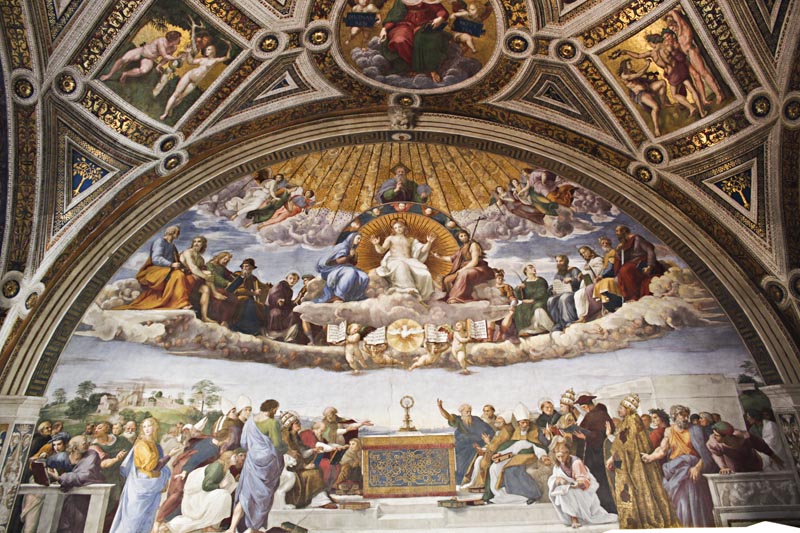

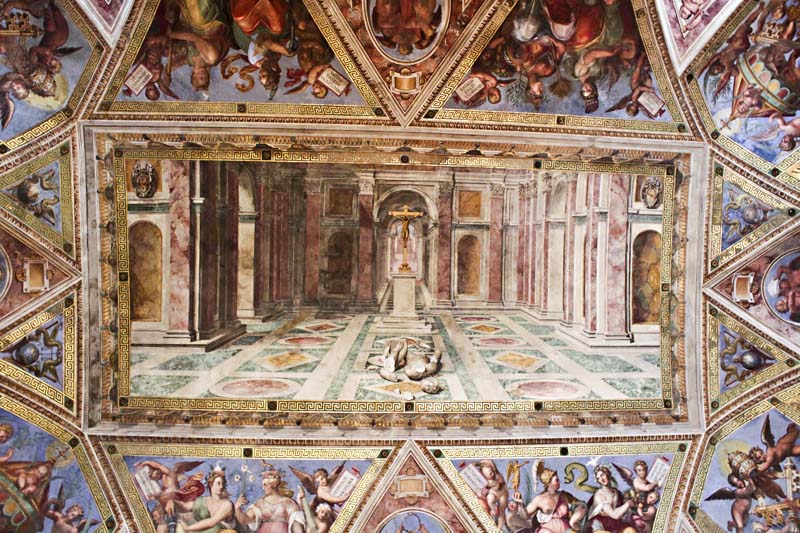


Michelangelo painted the Sistine Chapel reluctantly. He doesn’t really like to paint, he’s a sculpture first and foremost. However, when the Pope makes a request, you comply. The central panels show stories of the bible, from the great creation, to the touch of life to Adam, and so on. The far end panels have many figures and detail, however, Michelangelo realized it was too small to see from below, so he slowly increased the size of the figures and the closer panels feature just one or two figures, the first one being just God himself. The wall of Last Judgment on the left was painted much later and is much more bleak compared to his earlier works.

 The Sistine Chapel was a bit of a let-down for us because we had such huge expectations. We imagined an enormous room of lights and golden trimmings, but no, it was a pretty small room with 4 flat walls and tiny windows. Michaelangelo’s paintings are fantastic (and look even better in photo), but we were just expecting a little more ‘wow’. But we immediately got our “wow” fix when we entered St. Peter’s Basilica, it was everything we imagined the Sistine Chapel to be. Every inch of it was awe-inspiring.
The Sistine Chapel was a bit of a let-down for us because we had such huge expectations. We imagined an enormous room of lights and golden trimmings, but no, it was a pretty small room with 4 flat walls and tiny windows. Michaelangelo’s paintings are fantastic (and look even better in photo), but we were just expecting a little more ‘wow’. But we immediately got our “wow” fix when we entered St. Peter’s Basilica, it was everything we imagined the Sistine Chapel to be. Every inch of it was awe-inspiring.

You didn’t have to pay hefty museum fees to see good art. Just enter any church and you’ll get a good history lesson there. In churches, art was education, a bible for the illiterate. Look at them closely and you can see all the famous stories unfold, Adam & Eve, Noah’s Ark, Moses, Jesus, etc. Surely you can’t see every church in Rome since there is one around every corner … they were like Starbucks. I tried to hit all the largest ones, but sometimes it was the small ones that impressed the most.
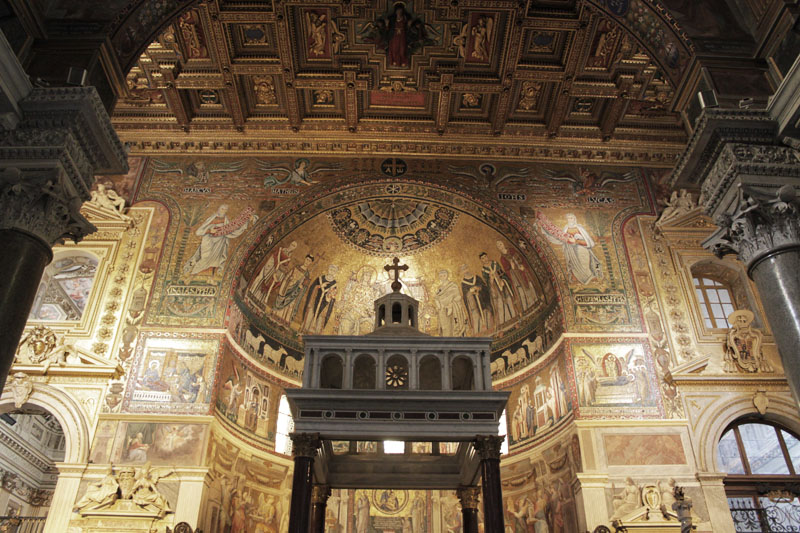


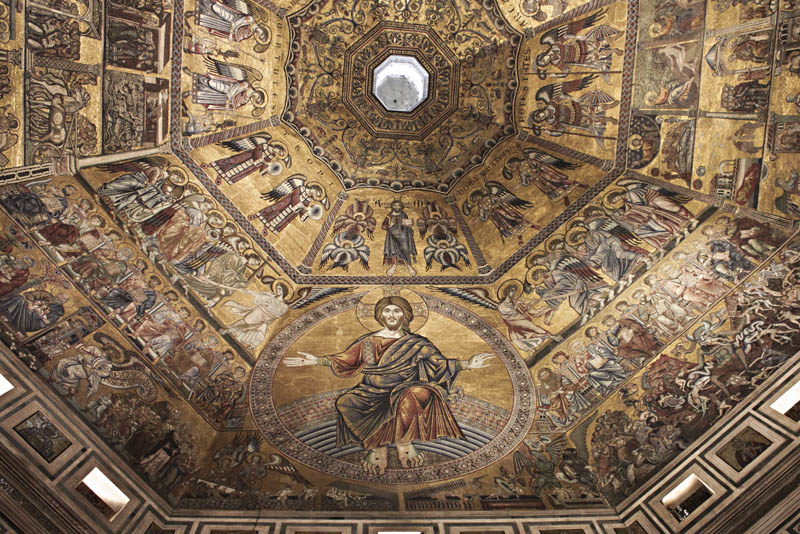
The Duomo in Siena had the greatest art on the floor. These are often covered up for protection, but are shown only for a limited time each year. I was glad we had good timing. This style of art is officially called “Graffiti”. No they don’t involve spray can, but instead are etchings in Marble. I love them because they remind me of Comic book art. The floors of this church was an ancient comic book!

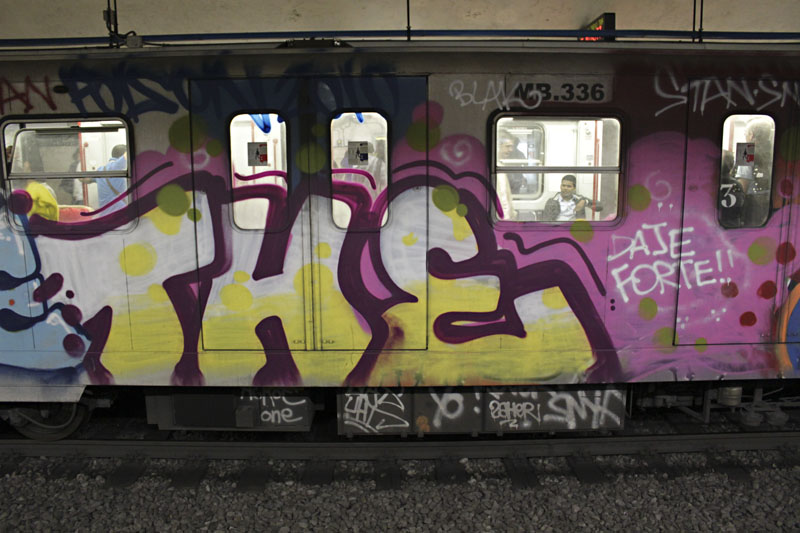









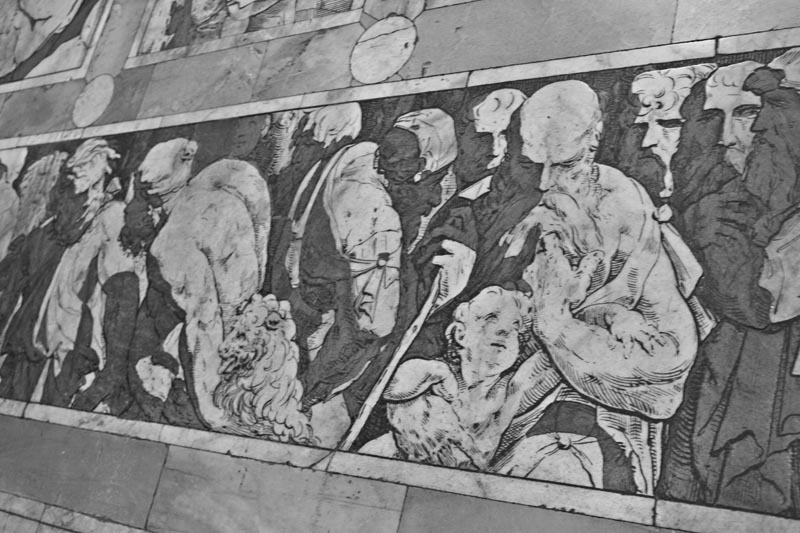
Thanks for wonderful information!!!!! Beautiful!!!!